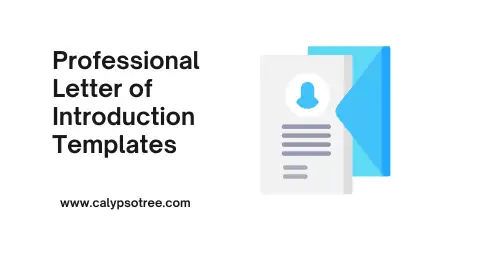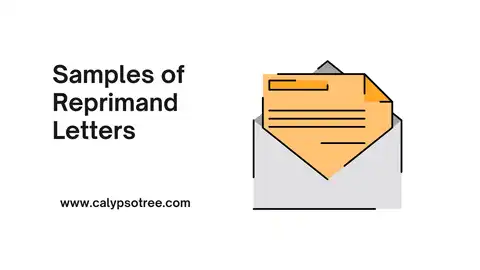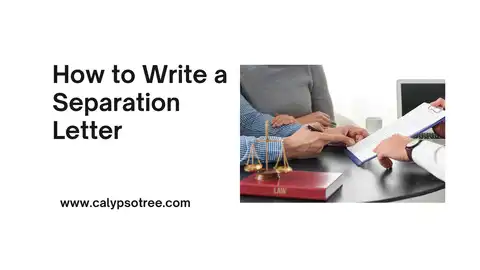What is a Letter of Persuasion? A persuasive letter is written to convince the reader of an idea or to get them to do something. It is different from a simple request or an informative letter. A persuasive letter uses arguments, facts, and emotional appeals to influence the reader. The main goal of this type of letter is to change the reader’s opinion or get them to act.
Why is a Letter of Persuasion Important?
Here are some key reasons why persuasive letters are important:
Helps in Business
It can help you get a job, make a sale, or gain a new client. For example, if you want to sell a product, a well-written persuasive letter can explain why your product is the best choice.
Builds Strong Relationships
Writing a persuasive letter can also help build strong relationships.
Solves Problems
Persuasive letters are useful for solving problems.For instance, if there’s a problem in your community, a persuasive letter to local leaders can help bring about change.
Influences Decisions
A persuasive letter can influence decisions. Whether it’s convincing your school to adopt a new program or asking for a policy change at work.
Clear Communication
Finally, persuasive letters improve communication. Writing clearly and persuasively helps others understand your point of view.
How Can You Make Your Letter of Persuasion More Effective?
Here are some tips to make your letter more effective:
Know Your Audience
Tip: Understand who you are writing to.
- Why: Knowing the reader’s interests and concerns helps you write a letter that speaks to them.
- How: If you’re writing to your school principal, think about what they care about, like student success and safety.
Use Clear and Simple Language
Tip: Write in a way that is easy to understand.
- Why: Clear language helps the reader understand your message quickly.
- How: Use short sentences and simple words. Avoid jargon and complicated terms.
Be Passionate and Sincere
Tip: Show your enthusiasm and honesty.
- Why: Genuine feelings can be very convincing.
- How: Write from the heart and let your passion for the topic show.
Include Facts and Evidence
Tip: Support your arguments with facts.
- Why: Evidence makes your argument stronger and more credible.
- How: Use statistics, examples, and quotes from experts. For example, “According to a study, students with access to libraries perform better in school.”
Use Emotional Appeals
Tip: Connect with the reader’s emotions.
- Why: Emotional connections can motivate the reader to act.
- How: Tell a personal story or use words that evoke feelings. For example, “Imagine a community where every child has a safe place to play.”
Additional Tips
- Start with a Strong Opening: Grab the reader’s attention right away. For example, “Did you know our community could be healthier with just a small change?”
- Be Polite and Respectful: Always use a polite tone, even if you’re passionate about the topic.
- Stay Focused: Stick to your main points and avoid going off-topic.
- Ask for a Specific Action: Clearly state what you want the reader to do. For example, “Please consider donating to our school library fund.”
What Tone Should You Use in a Persuasive Letter?
The tone of your persuasive letter should be respectful and polite, yet confident and assertive. Avoid being aggressive or confrontational, as this can alienate the reader. Instead, aim for a balanced tone that conveys your conviction without coming across as demanding or overbearing.
Structure a Persuasive Letter
Here is how to structure your letter:
Introduction
- Greeting: such as “Dear [Recipient’s Name],”.
- Purpose: For example, “I am writing to suggest a new idea for our school.”
Thesis Statement
- Main Point: Present your main argument or the action you want the reader to take. For instance, “I believe that introducing a music system instead of the traditional school bell would benefit everyone.”
Body
- Supporting Arguments: Provide reasons and evidence to support your thesis. Use multiple paragraphs, each focusing on a single point.
- Examples: Include specific examples or stories that strengthen your argument. This makes your letter more convincing and relatable.
Counterarguments
- Address Opposing Views: Acknowledge and refute any potential objections. This shows that you have considered different perspectives.
Conclusion
- Summary: Summarize your main points and restate your request or argument.
- Call to Action: Clearly state what you want the reader to do next. For example, “I look forward to your feedback on this proposal.”
Closing
- Polite Ending: End with a courteous closing statement, such as “Sincerely,” followed by your name and signature.
Key Elements of a Persuasive Letter
It should include several key elements to be effective:
Introduction
- Attention-Grabbing Start: Begin with a statement that captures the reader’s interest.
- Clear Purpose: State why you are writing right away.
Thesis Statement
- Main Argument: Present the main idea or request clearly and concisely.
Supporting Arguments
- Logical Reasons: Provide logical reasons to support your thesis.
- Evidence and Examples: Use facts, statistics, and examples to back up your points. This makes your argument more credible.
Emotional Appeal
- Connect Emotionally: Use emotional appeals to connect with the reader. Share personal stories or vivid descriptions that evoke feelings.
Counterarguments
- Address Opposing Views: Recognize and refute counterarguments. This shows that you have thought about different perspectives and strengthens your position.
Conclusion
- Summarize Main Points: Recap your key arguments to reinforce your message.
- Call to Action: Clearly state what you want the reader to do next. Make it easy for them to take action.
Polite Closing
- Respectful Tone: End with a polite and respectful closing, such as “Sincerely,” followed by your name.
Persuasive Letter Template
Here’s sample persuasive letter template:
Example of an Effective Persuasive Letter
[Your Name] [Your Address] [City, State, ZIP Code] [Email Address] [Date]
[Recipient’s Name] [Recipient’s Position] [Company/School Name] [Company/School Address] [City, State, ZIP Code]
Dear [Recipient’s Name],
I am writing to ask for your support in creating a community garden in our neighborhood. Community gardens provide many benefits, including fresh produce, a sense of community, and educational opportunities for children.
Studies show that community gardens improve local health and reduce crime rates. By supporting this project, you will help us create a healthier and safer environment for everyone.
Thank you for considering our request. Your support can make a big difference in our community.
Sincerely, [Your Name]
Persuasive Letter Example
Here’s a persuasive letter example:
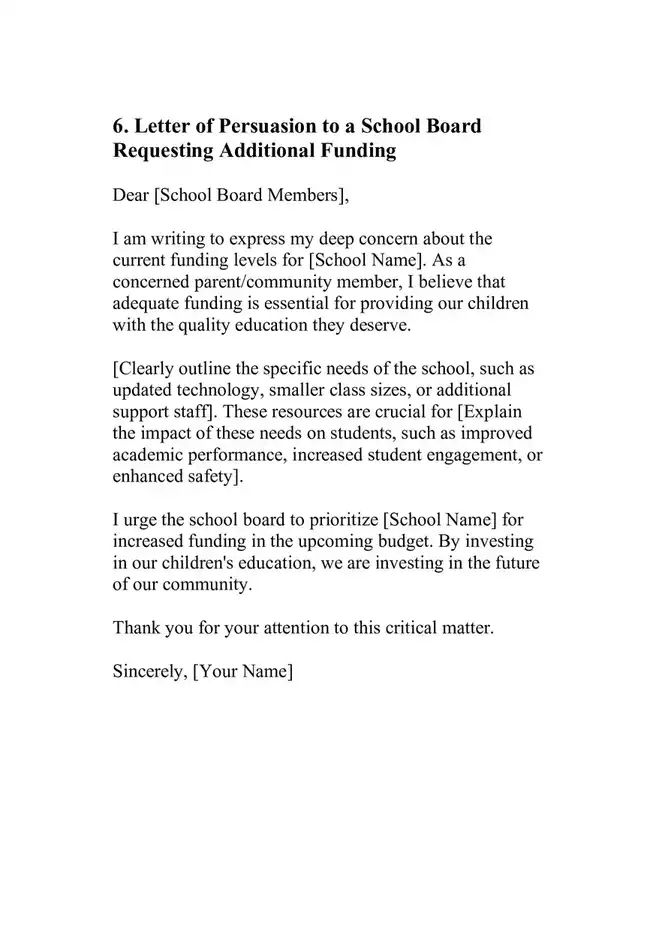
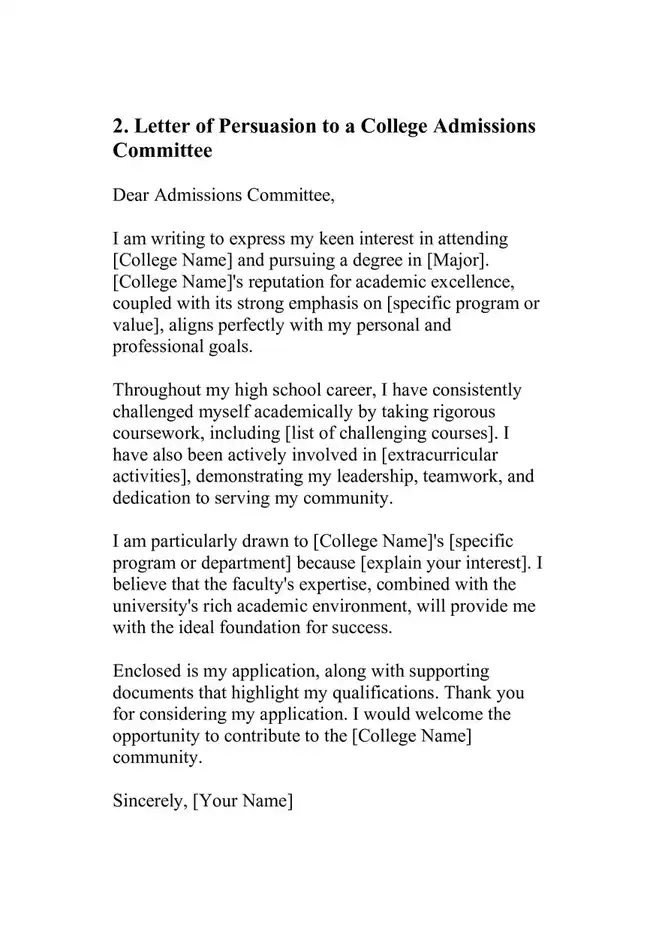
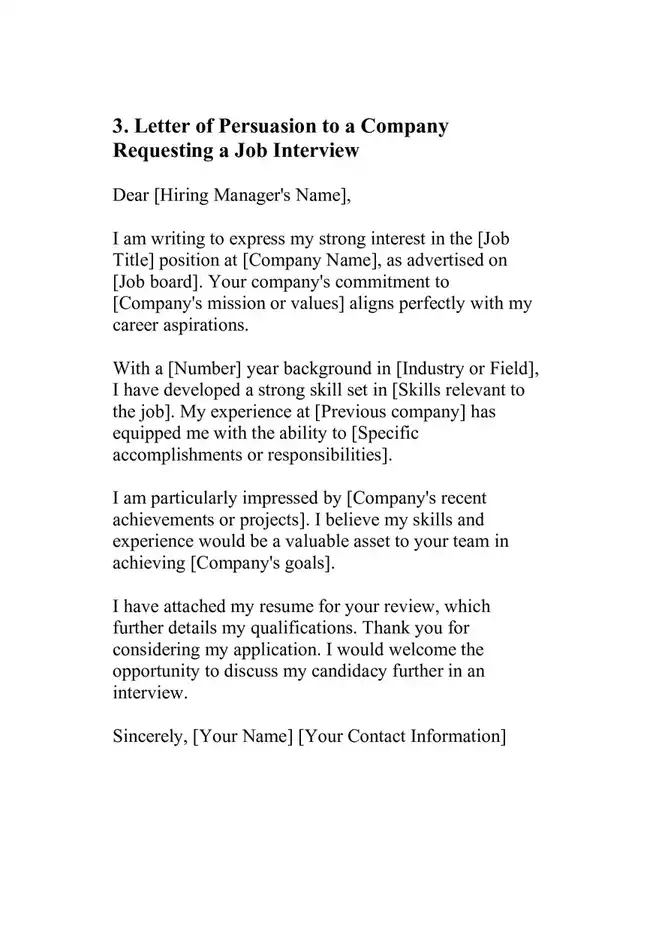
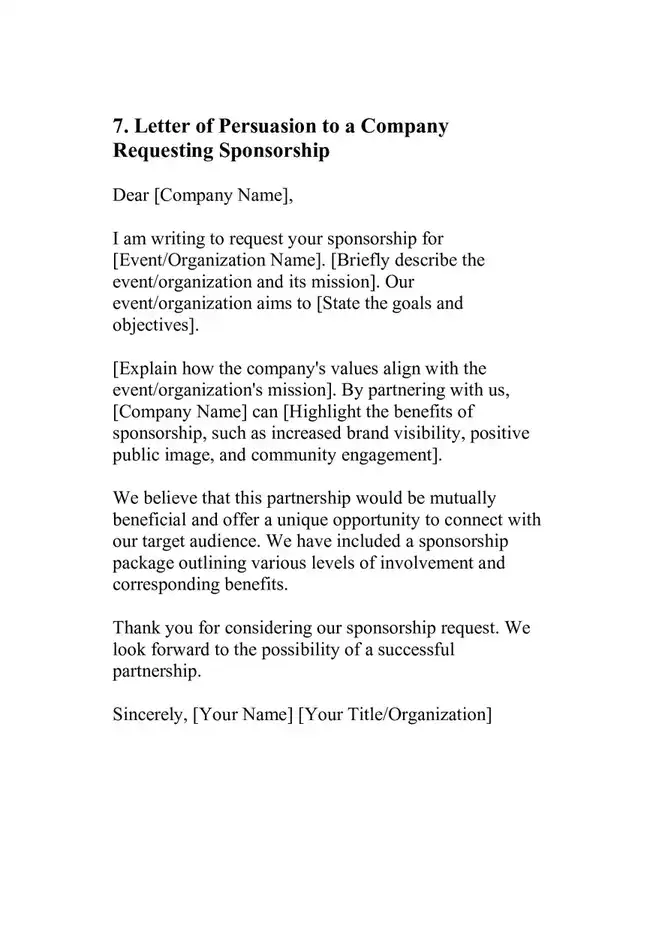
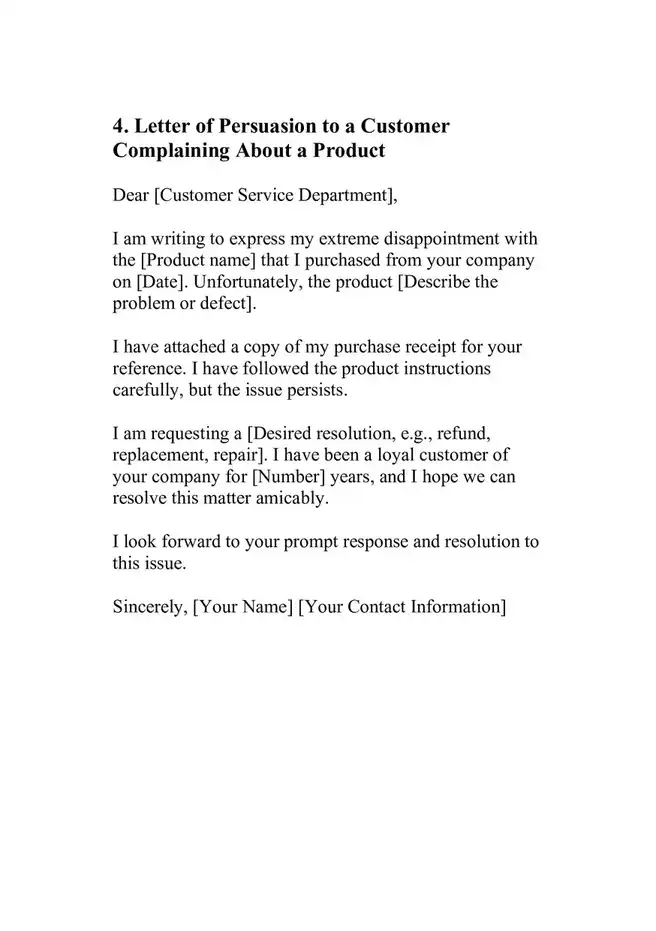
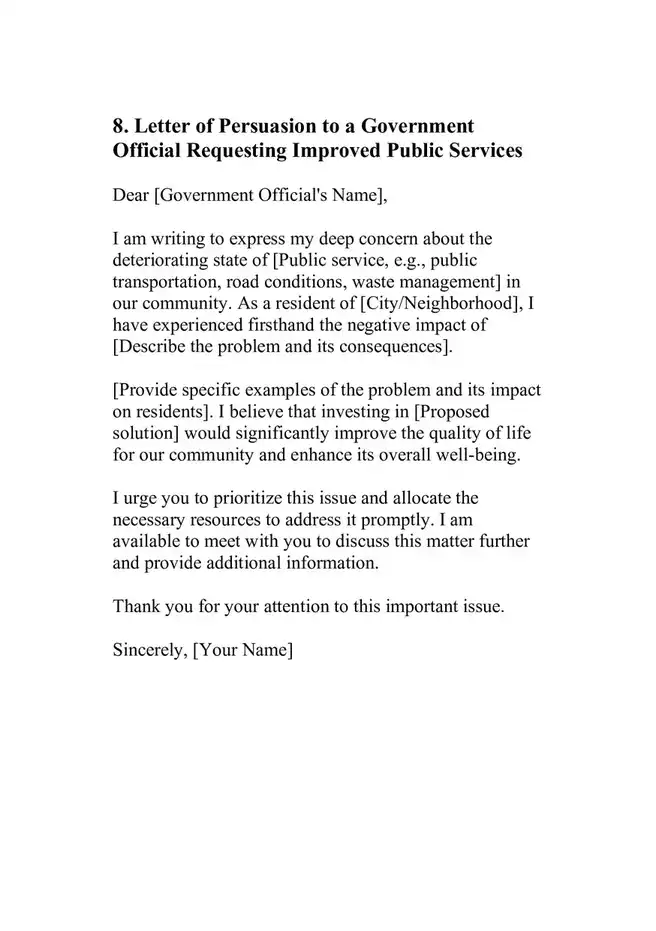
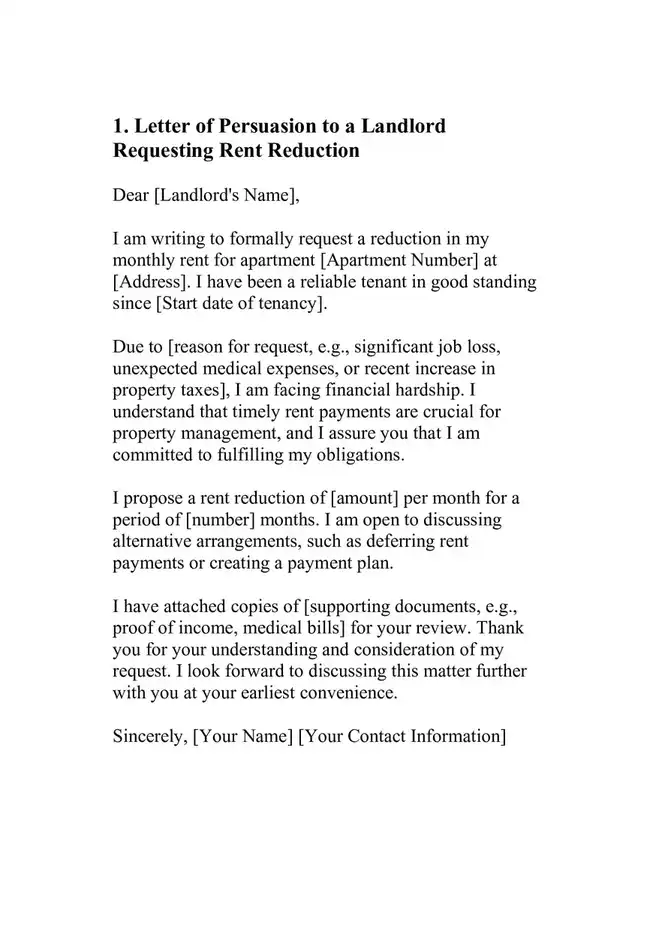
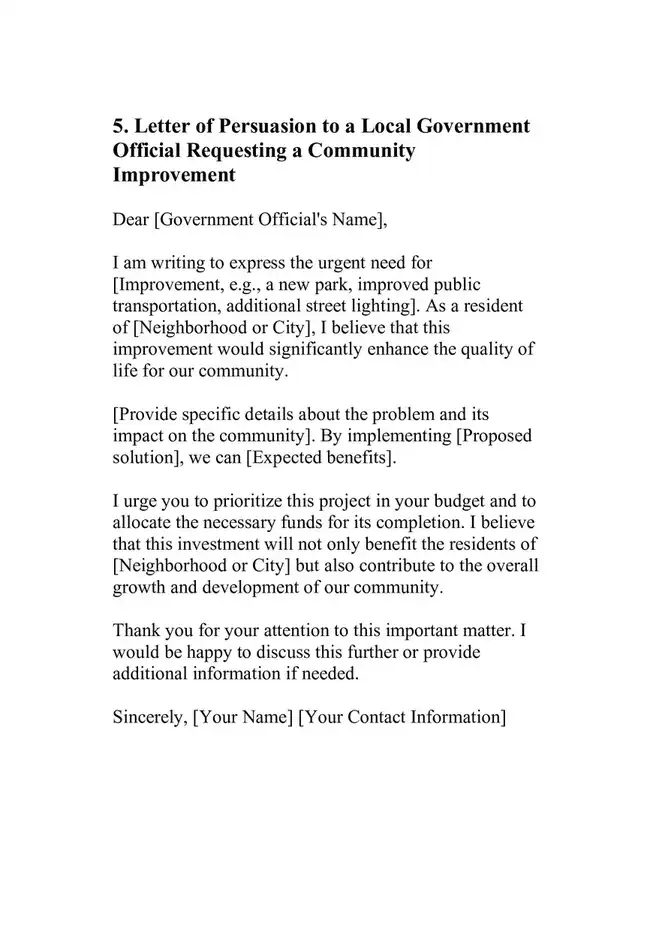
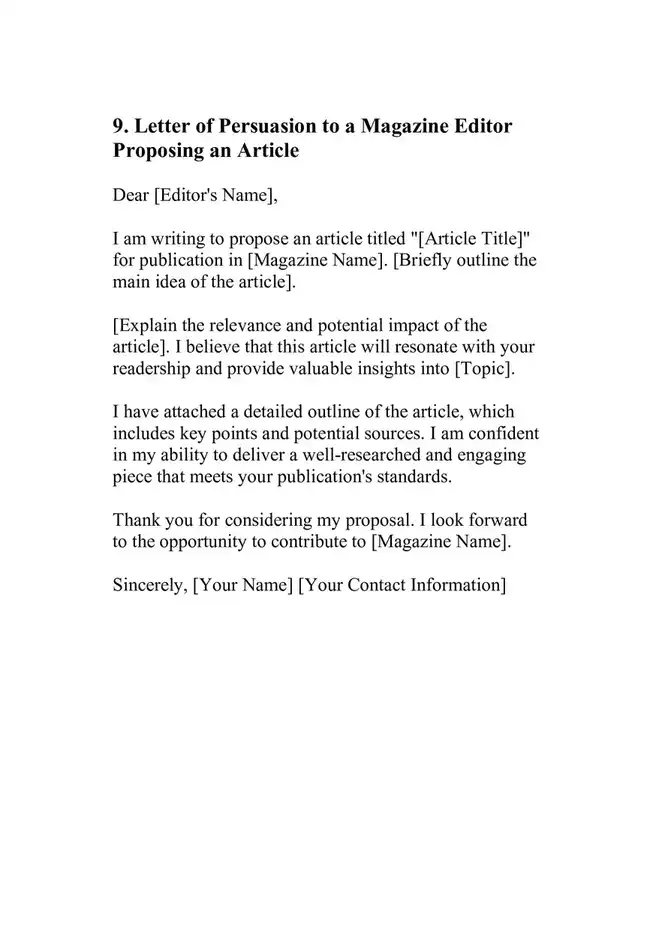
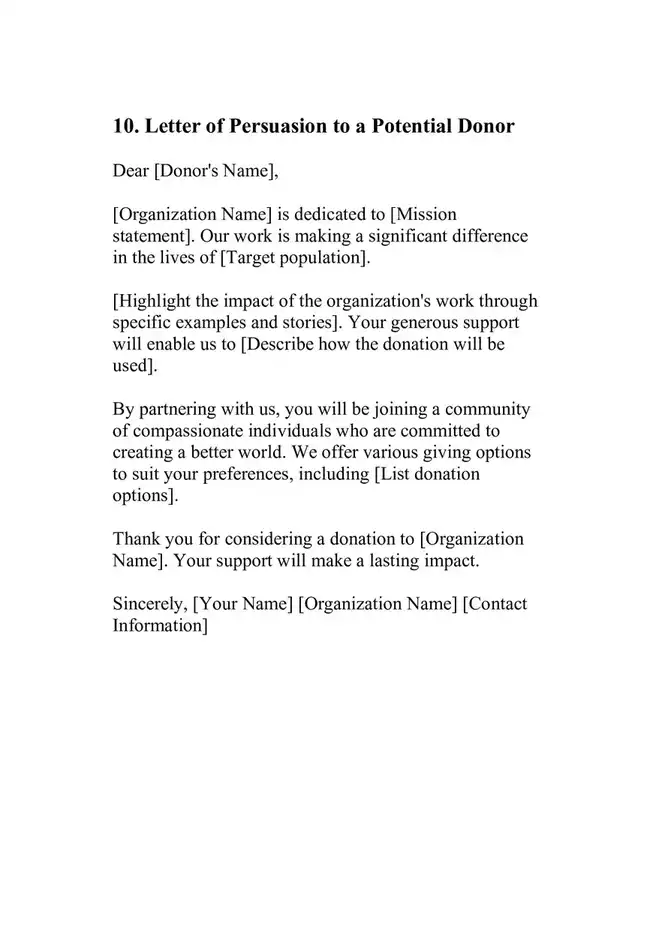
Common Mistakes and How to Fix Them
There are some common mistakes you should avoid. These mistakes can weaken your message and make it less convincing. Here are the mistakes and how you can fix them:
Being Vague
Mistake: Not being clear about what you want.
- Example: “I hope you can help with this issue.”
How to Fix: Be specific about your request.
- Fixed: “I need your help to approve funding for our school library.”
Lack of Evidence
Mistake: Not providing enough facts or examples to support your argument.
- Example: “Our community needs more parks.”
How to Fix: Use concrete evidence to support your claims.
- Fixed: “Studies show that more parks can improve community health and reduce crime rates.”
Overly Emotional Appeals
Mistake: Using too many emotional arguments without backing them up with logic.
- Example: “It would make me really happy if you agreed.”
How to Fix: Balance emotional appeals with logical arguments and facts.
- Fixed: “Supporting this cause will benefit many families and improve our community’s well-being.”
Ignoring the Audience
Mistake: Not considering the reader’s perspective or interests.
- Example: “You should do this because I think it’s important.”
How to Fix: Tailor your message to the reader’s needs and concerns.
- Fixed: “This project aligns with your goal to enhance community services and will benefit many residents.”
Poor Organization
Mistake: Writing a letter that is hard to follow due to lack of structure.
- Example: Mixing up different points without a clear flow.
How to Fix: Organize your letter with a clear introduction, body, and conclusion.
- Fixed: Start with an introduction that states your purpose, follow with supporting arguments, and end with a strong conclusion.
More Tips to Avoid Mistakes
- Proofread Your Letter: Check for spelling and grammar errors to ensure your letter is professional.
- Use Simple Language: Avoid jargon and complex words. Make your letter easy to understand.
- Stay Polite: Even if you feel strongly, always remain respectful and courteous.
- Be Concise: Keep your letter focused and to the point. Avoid unnecessary details.
How Do You Address the Recipient in a Persuasive Letter?
Here are the steps to do it right:
- Use a Formal Salutation
- Start with “Dear” followed by the recipient’s title and last name, such as “Dear Mr. Smith,” or “Dear Dr. Johnson,”. If you don’t know the recipient’s name, you can use “Dear Sir or Madam,”.
- Spell Names Correctly
- Double-check the spelling of the recipient’s name and title. Getting these details right shows respect and attention to detail.
- Know the Recipient’s Role
- If possible, mention their position or role. For example, “Dear Principal Harris,”. This acknowledges their authority and relevance to your letter.
How Do You Close a Persuasive Letter Effectively?
Closing It leaves a lasting impression and reinforces your message. Here’s how to do it:
- Summarize Your Main Points
- Briefly recap the key arguments you made in the letter. This reinforces your message and reminds the reader of your main points. For example, “In summary, switching to a music system instead of a school bell can create a more positive learning enviro nment.”
- Restate Your Request or Argument
- Clearly state what you want the reader to do next. Make sure your request is specific and actionable. For example, “I hope you will consider my proposal and support the implementation of this new system.”
- Express Gratitude
- Thank the reader for their time and consideration. A little appreciation goes a long way in making your letter more polite and respectful. For example, “Thank you for taking the time to read my letter and consider my suggestions.”
- Use a Polite Closing Statement
- End your letter with a courteous closing such as “Sincerely,” or “Best regards,”. These phrases are formal and respectful.
- Sign Your Name
- After the closing statement, sign your name. If it’s a printed letter, sign in pen. If it’s an email, you can simply type your name.
In conclusion, writing a letter of persuasion requires careful planning, clear structure, and a respectful tone.
By understanding the key elements and avoiding common mistakes, you can create a persuasive letter that effectively communicates your message and achieves your desired outcome. Practice and attention to detail will help you master this important skill and use it successfully in various aspects of your life.

Daniel Wilson Is a Seasoned communications professional and letter-writing expert. With over a decade of experience in corporate and non-profit sectors, Has developed a deep understanding of the power of effective communication.
Specializes in creating versatile letter templates that can be tailored to any situation. In this blog, Daniel shares a passion for the art of letter writing, offering practical tips, customizable templates, and inspiring ideas to help you communicate with clarity, confidence, and impact.






